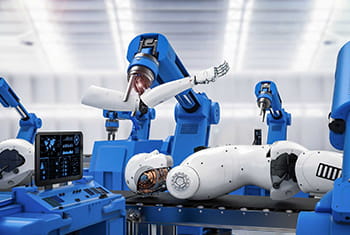Comprehensive
Quick-Turn Urethane Casting Production
Produce high-quality cast polyurethane parts precisely and quickly, on demand.

Vacuum Casting service by Xtmade
We offer a complete turnkey solution for creating master models and cast copies from your CAD designs. Not only do we make high-quality molds, we also provide comprehensive finishing services including painting, sanding, pad printing, and more. We’ll help you create parts for showroom quality display models, engineering test samples, crowdfunding campaigns, and more.
Do you need to produce high-quality plastic prototypes quickly? Polyurethane vacuum casting may be your ideal solution. Xtmade’s vacuum casting services are known for producing showroom quality display models, engineering samples, crowdfunding prototypes, and more. Of course, all of your parts are professionally painted, printed, and machined for a finished look.
Urethane casting can prove extremely valuable for earlymarket testing
Our polyurethane casting services give you access to high quality, low volume, “production-like parts” in a variety of rigid and soft polyurethane materials. Castings can even be painted in a variety of colors and textures and Xtmade with pigments that match Pantone, RAL, or provided samples. Our cast polyurethane parts not only resemble your end product in form, but also in appearance and finish. Polyurethane castings provide visual, practical, and functional evaluations and are invaluable for early market testing.
Our Capabilities
Polyurethane casting is a traditional manufacturing technique that is often used in the prototyping process. Xtmade produces polyurethane castings that can typically hold tolerances of +/-.010″ and +/-.003″/inch (whichever is greater). For tight tolerance polyurethane casting equipment and parts, Xtmade typically recommends using CNC machining or injection molding services. For soft parts, a Shore A tolerance of +/-10 is acceptable. Please note that these tolerances cannot be guaranteed as geometries vary and every application is different, so please contact our Xtmade experts directly.

Urethane Casting Options
Polyurethane is one of those versatile materials that can be processed to have a variety of properties, textures, hardness, etc. At Xtmade, we take pride in our versatility and are always ready to work with you to overcome any challenges you encounter in making the parts you need.
- Colors: We can produce the exact shades you need through a variety of coatings.
- Finishes: The polyurethane casting process is ideal for custom finishes and textures – this is due to the nature of the 3D printed original pattern and the quality of the silicone rubber mold. We can texture molds and parts to any spl finish or MT finish as well as any custom design you may require
- Resins: Polyurethane is versatile and can replicate the qualities of nearly any material, including AB, PP, and PE. When AB-, PP-, and PE-based prototypes are required, you can leverage the versatility of polyurethane to save on the low-volume costs of these materials
- Value-Added Options: When additional requirements beyond polyurethane casting are needed to manufacture your parts, we can provide these, including painting, pad printing, screen printing, and more.
Urethane Casting Materials
Cast polyurethane parts are often compared to injection molded materials. For example, a hard polyurethane cast part might be described as “polycarbonate-like,” while a more flexible plastic might be described as “polypropylene-like.” We have grouped polyurethane materials into general categories to help you make decisions faster and achieve design performance in your projects. The following table describes material categories and examples of techniques when selecting polyurethane.
Cast polyurethane materials:
- ABS
- POM (Polyoxymethylene)
- PP (Polypropylene)
- Silikon
- TPU (Thermoplastic Polyurethane)
Technical Specifications for Urethane Casting
- Lead Time: For up to 50 parts, lead time is 10 days or less, depending on part complexity and quantity.
- Maximum Part Size: The dimensions of the vacuum chamber (1900 x 900 x 750 mm) and the maximum volume of the product (10 liters) determine the size limits of the mold.
- Lifetime of Silicone Molds: Typical quantities per mold are up to 20-25 (depending on casting material and mold complexity).
- Accuracy: ±0.15mm/100mm, with a maximum accuracy of ±0.05 mm.
- Wall Thickness: For proper mold filling, the minimum wall thickness must be 0.75 mm. The recommended wall thickness is 1.5mm to 2.5mm.
- Finishes and Textures: Textures, colors, spray paints, coatings, clear polishes, inserts, and overmolding are available. Custom finishes are available upon request.
Vacuum Casting Advantage
Tooling Cost & Overturns
Small cost compared to injection machine
- Small tooling cost
- Quick manufacturing
- Master Model
- Duplicate parts easily
- 20-200 Batch production
- Manufacture any product ideas
Manufacturing Any Parts
Any parts can be done with Vacuum Casting
- Large parts
- Complex Shape
- Strong parts
- Lightweight parts
- Functional parts
- up 10 Cast materials
High-Quality
Result with vacuum casting is similar as injection molding
- Very high-quality parts
- Multiple finishing & post processing
- No Air bubbles
- 3d printing Alternative
- injection molding Alternative
- Extensive Wall thickness
What is Urethane Casting
Polyurethane casting (or polyurethane casting or polyurethane molding) is ideal for additive manufacturing for short-run production of plastic injection resin parts. Polyurethane casting is typically performed after an RTV mold (also known as a room temperature vulcanization mold) has been made from a stereolithography (SLA) prototype and is a cost-effective way to replicate production-ready parts in small batches.
Once the mold is made, polyurethane casting material (synonymous with polyurethane casting material) is injected into the “voids” of the mold, which allows a near-perfect copy of the original prototype to be made. We have lower durometer polyurethanes that are very soft, but we can also make stereolithography molds and inject silicone rubber into them.
The steps to making a polyurethane casting include:
1. Place risers on the part to allow air to escape from the final mold.
2. Apply a film to the part to serve as the seam for the final mold.
3. Build a box around the entire structure and fill it with silicone rubber.
4. Once the silicone rubber has cured, remove the box and risers, open the mold at the seam, and remove the original part.
5. The mold is ready and any type of polyurethane can now be injected into the mold to create an exact replica of the original part.
Industries We Serve
Our vacuum casting services are the preferred choice for custom parts in the automotive, medical and other industries due to fast production, low cost and durable parts.

Automotive

Medical

Aerospace

Consumer products

New Energy

Industrial machinery
Get a quote for your cast urethane parts
If you’re ready to start a cast polyurethane or silicone project, fill out our quick quote form to get a free quote in 4 hours or less.
Latest News
Xtmade team summarizes technical issues related to CNC machining
The CNC machining industry needs to solve problems…

